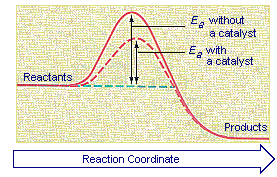See other posts here:
Chapter 1
Chapter 2
Chapter 6
Chapter 8
This chapter is on giving students opportunities to deepen their understanding.
Or as Allen Iverson would say, We're going to use the Blog post to talk about PRACTICE!
MISCONCEPTION ALERT!
Deepening your understanding does not mean doing the same thing to the same depth that was done before. That is just practicing, which is fine for somethings. Deepening means going to the next depth of knowledge.
My take-aways are:
- Students need opportunities to practice new skills and deepen their understanding of new information.
- Students need time to extend their thinking
- Part of this process is students recognizing their own misconceptions
- "Students need a sound foundation to build new awareness."
- Determine what kind of learning they need it is skill based (procedural) or knowledge based (declarative)
- Assign tasks as determined by kind of learning they are doing...
Building new awareness:
- Schema Development
- linking old learning and new
- challenge existing perceptions
- Procedural knowledge
- the "do" of a learning goal
- develops from declarative knowledge
- involves adding, editing, and delting steps
- fully developed seems automatic
- also termed as "fluency"
- Need for practice to make this automatic
- guided practice involves "gradual shaping of a procedure facilitated by teacher guidance"
- OVER TIME PROCEDURAL KNOWLEDGE IS SHAPED BY THE LEARNER.
- Developing Declarative Knowledge
- reviewing and revision are key
- Students need at least 4 exposures to integrate something into their existing knowledge base. (Rovee-Collier, Nuthall)
- No more than 2 days between exposures (Think about this as it relates to Professional development)
- Ways to improve declarative knowledge
- revision - as in writing
- error analysis - revising ones own thinking
- Similarities and differences - think Venn Diagram, classification also work
- homework - extends learning opportunities that are limited byt he school day
Facts about homework (Don't shoot the messenger, I don't like homework either)
- Relationship between amount of homework students do and their achievement level were found positive and statistically significant.
- No clear benefits of homework at the lower levels (below grade 6)
- Homework should:
- Foster good study habits
- foster positive attitude toward school
- There is no correlation between time spent on homework and student achievement
- For secondary students there are benefits to homework up to one to two hours a night, after that it diminishes greatly.
- It's not the time spent on homework but the proportion completed that impacts achievement
- Parent involvement with homework is positive when:
- There are clear roles
- Parents are not experts
- Parents can ask clarifying questions to help students summarize
- Give students practice, but make it focused, and meaningful
Action steps for your classroom:
1. Let students find similarities and differences often (compare, classify, create metaphors, analogies)
2. Help students identify errors in thinking (faulty logic, attacks, weak reference, misinformation)
3. Practice, Practice, Practice.... Structure practice, gradual release, develop fluency)
4. Use Cooperative groups with a focused intent
5. Assign PURPOSEFUL homework
6. Allow students time to make corrections in their notebooks/journals/blogposts/googledoc files.














